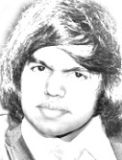RAIN Radio
Frequency ID (Passive UHF RFID) technology has transformed various industries
over the past two decades, yet the limitations of fixed readers in both
accuracy and range have constrained deployment, leaving many organisations
reliant on the more accurate but resource draining manual handheld readers or
very expensive RFID active tags systems.
With increasing numbers of patients, shrinking budgets and
growing treatment complexity, delivering healthcare has never been so
challenging. Real-time visibility of the location of assets and inventory can
considerably improve efficiency in hospital environments and ensure the
required equipment or material is available in the right place at the right
time.
Sabesan
Sithamparanathan, Founder and CEO, PervasID, shares
three ways in which the near 100% detection accuracy and extended range of the
next generation of fixed RAIN RFID readers can transform the healthcare sector.
1. Asset Tracking
Managing
medical equipment and assets across an NHS Trust can be hugely complex and very
expensive, especially for those items that require routine – and audited –
maintenance. Furthermore, with staff needing continuous access to devices normally
stored within the medical equipment library, accurate real time inventory
records are key to minimise the impact on critical clinical time, as well as
the overall utilisation and cost of these expensive assets.
Wide-area RAIN RFID tag readers are ideal for tracking medical
equipment in hospital environments. And provide real-time visibility of the
location of medical devices. This reduces time spent by staff searching for
equipment and is essential for delivering healthcare, particularly when the
equipment needed is critical. It also reduces the need for capital investment
as availability and utilisation levels of existing devices are
increased. With asset records updated automatically, there is no need for
time-consuming manual scanning.
Traditional passive RFID gateway solutions often carry the
risk of tags not being read while passing through a doorway. Utilising
wide-area readers provide a significant improvement in accuracy, as they use a
number of antennas to scan an area, such as a medical equipment library,
engineering workshop, theatre or ward, from different angles to detect which
equipment is in the area 100% of the time.
2. Inventory Management
RAIN RFID
has already transformed inventory management in retail and it can do the same
for healthcare. It supports medical inventory management solutions by providing
accurate visibility of supply levels in real time to avoid stock-outs, reduce
waste and minimise overstocking. Delivering consistently high read rates
even where medical supplies are densely packed, systems can monitor stock
tagged with passive RFID labels across multiple locations to enable rapid
replenishment and efficient cost control.
It replaces manual methods for inventory management that are
labour-intensive and prone to human error. In such a critical industry where
administering and tracking the right medication is essential, the benefits of
RFID in this area are invaluable. Data obtained through tracking also provides
an audit trail for cost and operational analysis and planning.
3. Medical Record
Tracking
Patient records are constantly on the move, with patients
transferring between various wards or even hospitals. In a large hospital,
locating the right record at the right time for the right patient can lead to
delays in patient treatment and wasted time for clinical staff. Saving time is
a simple as tagging patient records with passive RFID tags and having RAIN RFID
fixed readers constantly reading the tags in the various document libraries, as
well as at key check points around the hospital. This reduces time searching
for patient files and in turn leads to a better patient experience. The ability
for clinicians to locate health records quickly is invaluable, especially in
urgent situations.
Essential Accuracy
The use of RFID tags in healthcare might appear an obvious
solution but the limitations of fixed RFID reader technology, particularly in a
‘tag dense environment has deterred adoption for many.
Traditional
fixed readers have been unable to deliver the detection accuracy required to
justify investment. In any area with a high number of RFID tags such as medical
equipment storage, there are simply too many dead spots due to signal reflections:
the more tags, the lower the accuracy. At best in these environments, detection
capacity can reach 85-90%.
There is a
compelling business case for healthcare providers: The ability to track medical
equipment with far more accuracy and in almost real-time, eradicates the time
wasted by staff attempting to locate essential assets. There is no need to
invest in extra inventory to mitigate for asset management inefficiency,
releasing much-needed funds; and essential maintenance activity can be achieved
with far more control and efficiency. And with a government push towards all
medical equipment manufacturers adding RFID tags to equipment at source, the
ability to achieve near 100% accuracy using passive (battery-less), rather than
the more expensive active (battery-powered) tags, along with the very latest
RAIN RFID fixed reader technology, is incredibly compelling.























